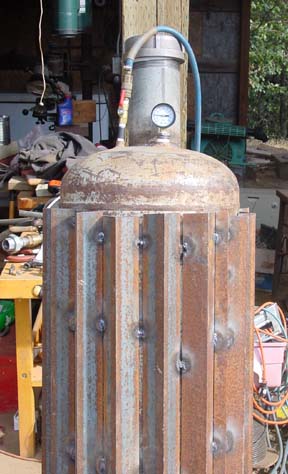How we're using the term "Syngas."The gasification of biomass generates a combustible mixture that can be stored, piped and used to heat the ovens in a village bakery or fire a pottery kiln. That gas can range from half the heating value of natural gas on up to the same heating value; the difference lies in the amount of inert gases such as nitrogen or carbon dioxide the gas contains. The downstream removal of those inert gases is difficult and expensive both in terms of the equipment needed and the energy efficiency of the process. One alternative is to use pure oxygen as the oxidizer and generate a producer gas which is already close to being fully combustible right as it comes out of the gasifier.
The challenge then is that the molecular mix needed in order to synthesize methanol is one part CO to two parts H2. One way to do that is by reacting a nitrogen-free producer gas with pure oxygen and super#&8210;heated steam in a process known as auto-thermal steam reformation. There are a variety of ways to shift a 1:1 ratio to a 1:2 ratio such as the unit pictured on the right, but which ever route one takes, the reactor has to be fed what it needs in order to produce the desired product. For an ammonia reactor, syngas would be a 1:3 mix of nitrogen and hydrogen; for a Fisher-Tropsch reactor, syngas would be a 1:1 mix of CO and H2; and for a methanol reactor, syngas would be a 1:2 mix of CO and H2. But even getting the ratio right isn't enough because for a gas mix to be a viable syngas, the criteria isn't just about what's in the gas, it's also about what's not in the gas. For example, some gas stream components such as sulphur will quickly shut down the reaction by poisoning (inactivating) the catalysts that convert syngas into fuel. This step is referred to as "polishing" the gas. It's only after producer gas has been dried, shifted and polished that it will meet the B2M criteria for syngas. |
